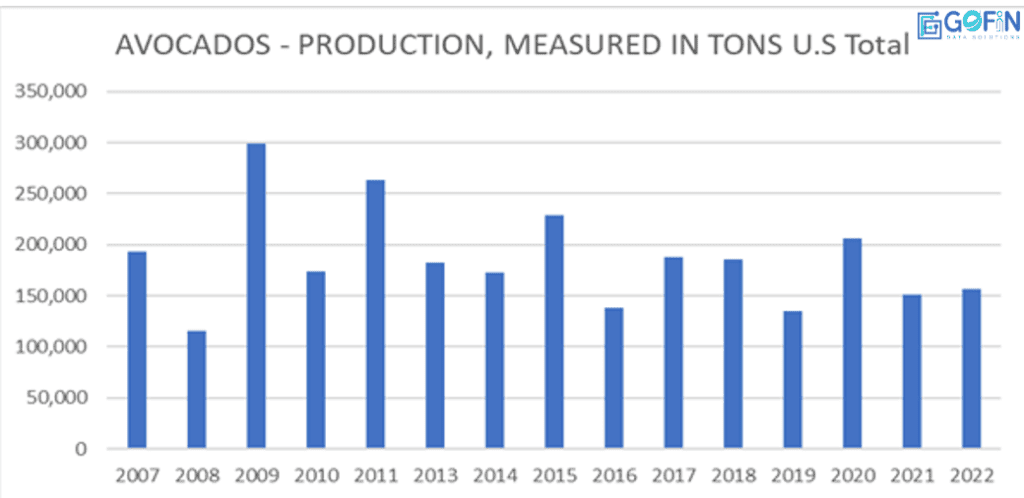Avocado is a creamy-textured stone fruit that grows in tropical areas. Compared to other fruits, which are primarily carbohydrates, the avocado fruit has a distinct consistency due to its high level of beneficial fats.
Avocados were first domesticated in Mexico in about 550 BC. The Hass avocado, which was created in California in the late 1920s, is the most common type of avocado found in the United States. Though not native to California, avocados' history is inextricably linked to the state. California also had the largest dollar sales of avocados in the United States in 2018.
Despite being introduced to the consumer market some time ago, the fruit has recently become extremely popular among Americans. Avocado retail sales in the United States were 1.96 billion US dollars in 2021 but grew to 2.7 billion US dollars in 2022. Avocado was once one of the main product categories in the United States' fresh department, and sales have recently increased by 7.7 percent in 2022. Avocados are indigenous to Mexico and Central America, although they are cultivated in many other parts of the world. They require a large amount of money to nurture because an avocado tree takes three to five years to yield fruit. As of 2021, about 248 thousand hectares of avocado trees have been planted in Mexico, up from 168.11 thousand hectares in 2013.

Source- USDA, Lending acres, Gofin Data Solutions Inc.
Avocado prices in the United States increased in 2022, hitting $60.5 per carton 2-layer box in June, the highest price in the previous two years. Throughout 2020 and 2021, the price of avocados in their cartons 2 layer presentation changed regularly in the United States, with prices typically reducing at the beginning and end of the year, and the greatest prices appearing between March and September.
Prices followed this similar path by the end of 2021 and the beginning of 2022; nonetheless, prices have not ceased rising. By June, the price had risen to its highest level of the year, surpassing the previous two years' record of $60.5 per box.
Avocado prices are determined by a variety of variables, including weather, market supply, and economic pressures such as inflation and global trade policies. Avocado supplies in the United States have fluctuated in previous years, resulting in price swings; however, 2023 offers some hope.
The California Avocado Commission predicts 257 million pounds of avocado yields in 2023, with Hass avocados accounting for 243 million pounds. California is expected to generate 5.1 million pounds of avocados in the week ending February 26, 2023.
This anticipated avocado supply glut will result in reduced avocado prices. Avocado volume growth began in the fourth quarter of 2022, resulting in a 35% year-on-year decline in wholesale avocado prices. This continuous development in avocado yields in 2023 is a tremendous improvement over the previous year when the US suffered reduced quantities and higher prices, much to the joy of avocado dealers and consumers. According to the OECD-FAO Agricultural Outlook 2021-2030, notwithstanding recent variations, avocados are predicted to remain the fastest-growing commodity in the long run, reaching an output of 12 metric tons by 2030.
